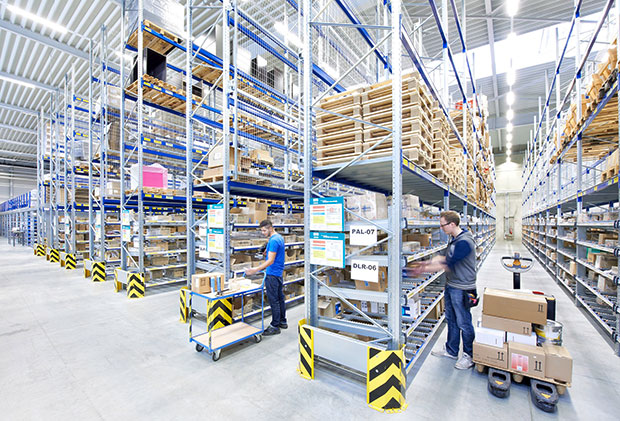How can smaller businesses improve storage and picking for anytime, anywhere fulfilment without huge cost? Edward Hutchison, Managing Director of BITO Storage Systems offers some suggestions.
 Today’s demands for anywhere, anytime fulfilment requires storage and order picking systems that can facilitate rapid and accurate deliveries for store replenishment, click and collect and the direct to home channel. A single pool of stock within an omni-channel fulfilment facility will generally serve all channels, directed by sophisticated warehouse management systems.
Today’s demands for anywhere, anytime fulfilment requires storage and order picking systems that can facilitate rapid and accurate deliveries for store replenishment, click and collect and the direct to home channel. A single pool of stock within an omni-channel fulfilment facility will generally serve all channels, directed by sophisticated warehouse management systems.
The physical storage complexities in combining the differing needs of the multiple channels in terms of speeds and order quantities can lead to a great deal of specialty around picking operations. A facility will need to accommodate picking pallet and caseloads as well as large numbers of single items – some of which may go direct to a customers’ home, others will go to the store for click and collect purposes together with replenishment stock.
For online orders, hit rates at pick slots are much slower and the average web order is a single item, though this of course varies depending on the retailer, so there is a lot of travel involved and the cost of that is quite significant. There’s also complexity associated with mixed products going to the same consumer. And, as the online retailer’s SKU range diversifies, then a wider range of locations will be required.
This calls for flexible picking systems that can be scaled up or down to accommodate large variances in volumes, SKU range and profile for fulfilment and, in many cases, handling the returns.
Practical picking
While bigger firms grapple with automating order picking to various extents, smaller retailers unable to take this route need practical and more attainable solutions. Many are opting for reliable, lower cost storage and order picking systems for fulfilment agility.
These solutions might include multi-tier shelving, adapting pallet racking for picking small goods, installing live storage flow shelves to give greater pick face density, investing in bins and containers for efficient storage and delivery, and adopting technology that allows staff to spend their time more productively picking orders – such as driverless internal transport to move goods from pick zones to the despatch area.
Manual shelving–based multi-tier installations are simple and the investment amounts to a fraction of the sum required for an automated system. They allow simultaneous order picking and storage of non-palletised goods and small items stored in bins and cartons on several tiers to reduce order throughput times.
With an eye on high energy bills that may accompany automated materials handling systems, a ‘mechanised’ alternative in the form of pallet and carton live storage systems offers an efficient means for providing rapid, efficient and accurate order picking. It gives a far greater pick location density – typically saving up to 20 per cent of floor space for small parts storage, for example, compared to static shelving, while travel time for pickers can be improved by two thirds.
Compared with fully automated systems and traditional racking, live storage hits a sweet spot between investment, storage density and speed for fast moving goods, which are picked on a First In, First Out (FIFO) basis. It gives any operation the agility to respond to any changes in business circumstances. Rather than set up new pick locations to deal with peaks that will be under-utilised for most of the year, live flow shelves can be fitted in the lower bays of existing pallet racking. Adding simple automation technologies such as pick-to-light and voice picking can further improve accuracy and throughput speed.
It is crucial to engage with experts in the field of storage efficiency as well as a supplier that can offer a one stop shop – not just for racking, live storage and shelving but also for the containers used within them. www.bito.com




Comments are closed.